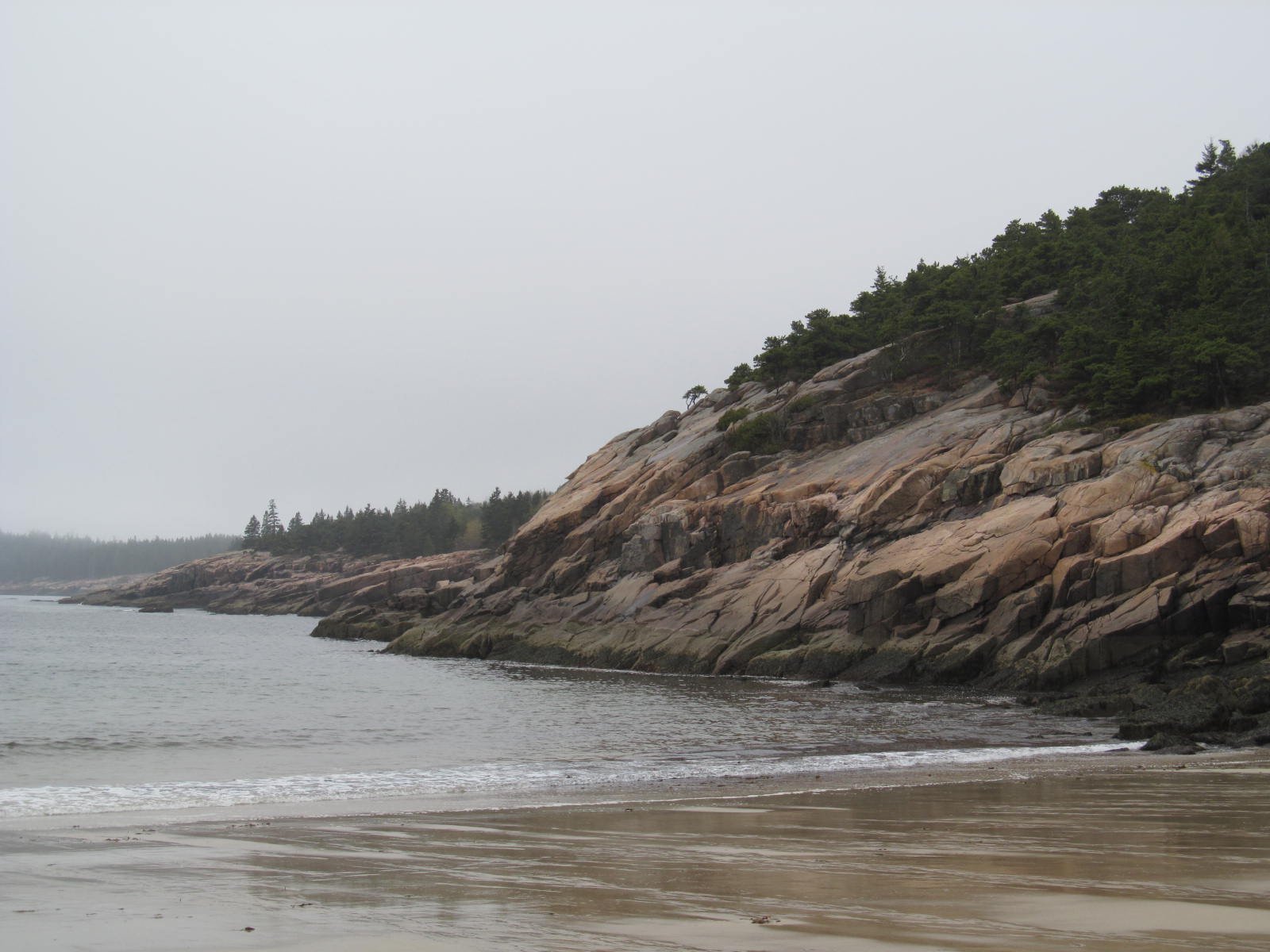Acadia National Park’s shoulder season, spanning from late September to mid-October, offers a unique blend of autumnal beauty and tranquility. This period is characterized by cooler temperatures, vibrant fall foliage, and fewer crowds, making it an ideal time for nature enthusiasts and adventure seekers. Visitors can enjoy a range of activities from hiking and biking to wildlife watching, all while experiencing the park’s stunning transformation into a colorful autumn landscape.
What Are the Weather Conditions During Acadia National Park Shoulder Season?

The shoulder season in Acadia National Park presents a mix of weather conditions that can greatly impact your visit:
- Temperature Range:
- Daytime: Low 70s to mid-70s Fahrenheit (21-24°C)
-
Nighttime: 30s to 40s Fahrenheit (-1 to 7°C)
-
Precipitation:
- October: Variable, with potential for rain and fog
-
November: Wettest month, averaging 6.42 inches of rainfall
-
Weather Patterns:
- Rapid changes from sunny to foggy or rainy
- Possibility of early snow flurries
To make the most of your visit during the Acadia National Park shoulder season, it’s crucial to be prepared for various weather conditions. Here’s a packing list to help you stay comfortable:
- Layered clothing (base layer, insulating layer, waterproof outer layer)
- Waterproof hiking boots
- Rain jacket and pants
- Warm hat and gloves
- Sunglasses and sunscreen (for sunny days)
- Umbrella
- Reusable water bottle
- Backpack for day hikes
What Activities Are Available During the Shoulder Season?

The Acadia National Park shoulder season offers a variety of activities for visitors to enjoy:
-
Leaf Peeping: Mid-October is the prime time for fall foliage viewing. Check the state’s fall foliage website for updates on the best spots to see vibrant autumn colors.
-
Hiking: Many trails remain open, offering stunning views of the changing landscape. Popular routes include:
- Cadillac Mountain Trail (4-6 hours, moderate to strenuous)
- Ocean Path Trail (2-3 hours, easy to moderate)
-
Beehive Trail (2-3 hours, strenuous)
-
Biking: The park’s Carriage Roads provide excellent opportunities for cycling through scenic autumn landscapes.
-
Guided Tours: Ranger-led programs continue during the shoulder season, including:
- Nature walks
- Birdwatching tours
-
Educational programs on park history and ecology
-
Wildlife Watching: As animals prepare for winter, opportunities for wildlife sightings increase.
-
Photography: The combination of fall colors, dramatic skies, and fewer crowds creates ideal conditions for photography enthusiasts.
-
Island Explorer Shuttle: This free service continues into October, helping visitors navigate the park without parking concerns.
Where Should You Stay During Acadia National Park Shoulder Season?
Accommodation options during the Acadia National Park shoulder season are varied, catering to different preferences and budgets:
| Accommodation Type | Price Range (per night) | Amenities |
|---|---|---|
| Hotels and Inns | $150 – $300 | Wi-Fi, restaurants, fitness centers |
| Camping | $30 – $50 | Basic facilities (restrooms, potable water) |
| Vacation Rentals | $100 – $300 | Full kitchens, laundry facilities |
| Lodges | $200 – $500 | Guided tours, meal plans, proximity to trails |
Recommended Options:
-
Bar Harbor Inn: Located in downtown Bar Harbor, offering ocean views and easy access to park shuttles.
-
Blackwoods Campground: Open until mid-October, providing a rustic experience within the park.
-
Acadia Cottages: Vacation rentals in Southwest Harbor, offering a home-away-from-home experience.
-
Asticou Inn: A historic lodge in Northeast Harbor, known for its beautiful gardens and proximity to hiking trails.
What Are the Best Hiking Trails for the Shoulder Season?
During the Acadia National Park shoulder season, certain trails offer particularly rewarding experiences:
- Cadillac Mountain Trail
- Difficulty: Moderate to strenuous
- Length: 7.1 miles round trip
-
Highlights: Panoramic views, fall foliage, potential for sunrise/sunset viewing
-
Ocean Path Trail
- Difficulty: Easy to moderate
- Length: 4.5 miles round trip
-
Highlights: Coastal scenery, Thunder Hole, Sand Beach
-
Jordan Pond Path
- Difficulty: Easy
- Length: 3.3 miles loop
-
Highlights: Reflective pond views, fall colors, relatively flat terrain
-
Beehive Trail
- Difficulty: Strenuous
- Length: 1.4 miles round trip
-
Highlights: Iron-rung climbs, dramatic views, challenging terrain
-
Carriage Roads
- Difficulty: Various (easy to moderate)
- Length: 45 miles of interconnected gravel roads
- Highlights: Accessible for biking and walking, stone bridges, diverse landscapes
When hiking during the shoulder season, be aware of:
– Shorter daylight hours
– Potentially slippery conditions due to fallen leaves or early frost
– Rapidly changing weather patterns
Always check trail conditions at the visitor center before setting out, and inform someone of your hiking plans.
How Can You Make the Most of Your Visit During Acadia National Park Shoulder Season?
To maximize your experience during the Acadia National Park shoulder season:
-
Plan Flexibly: Be prepared to adjust your itinerary based on weather conditions.
-
Book in Advance: While less crowded than peak season, popular accommodations can still fill up.
-
Take Advantage of Ranger Programs: These offer insights into the park’s ecology and history.
-
Visit Popular Spots Early: Sunrise at Cadillac Mountain is less crowded but still spectacular.
-
Explore Less-Traveled Areas: Consider visiting the Schoodic Peninsula or Isle au Haut for a quieter experience.
-
Participate in Fall Events: Check the park’s calendar for special autumn-themed programs or local harvest festivals.
-
Bring Appropriate Gear: Pack layers, waterproof clothing, and sturdy hiking boots.
-
Stay Informed: Keep updated on park conditions and closures through the official Acadia National Park website or visitor center.
By following these tips and embracing the unique characteristics of the shoulder season, you can enjoy a memorable and enriching experience in Acadia National Park, witnessing the breathtaking transition of seasons in one of America’s most beloved natural treasures.
